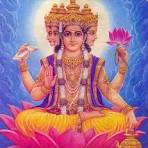Hanuman.
Title:
**Hanuman: The Divine Monkey God of Strength and Devotion**
Introduction:
Hanuman, the revered figure in Hindu mythology, holds a special place in the hearts of millions as a symbol of strength, devotion, and unwavering loyalty. Known as the monkey god, Hanuman's tale is woven into the fabric of the great Indian epic, the Ramayana, where his extraordinary feats and unwavering devotion to Lord Rama make him a central and beloved character.
### **The Birth of Hanuman:**
Hanuman's origin is a fascinating tale in itself. According to Hindu mythology, he is the son of Anjana and Kesari, both monkeys who were ardent devotees of Lord Shiva. Anjana, seeking a child, prayed intensely to Lord Shiva, who blessed her with the incarnation of his own divine power. Thus, Hanuman was born with extraordinary strength, wisdom, and divine abilities.
### **Childhood Exploits:**
Hanuman's childhood was marked by playful adventures and displays of strength. Legend has it that Hanuman, in his playful mischief, once attempted to eat the glowing sun, mistaking it for a ripe fruit. This incident caught the attention of the gods, who blessed him with various boons, including immunity from all celestial weapons.
### **Hanuman's Devotion to Lord Rama:**
Hanuman's life takes a significant turn when he meets Lord Rama, the seventh avatar of Lord Vishnu, during the events of the Ramayana. Drawn to Rama's divine presence, Hanuman pledges his undying devotion to him. His devotion is so profound that he merges his identity with Rama, declaring, "When I don't know who I am, I serve You, and when I do know who I am, You and I are One."
### **The Search for Sita:**
Hanuman's most celebrated feat is the search for Sita, Rama's wife, who was abducted by the demon king Ravana. Rama, desperate to find Sita, seeks the help of Hanuman. With unwavering determination and the power to leap across oceans, Hanuman crosses the vast sea to reach the island of Lanka, where Sita is held captive. His courage and dedication inspire countless devotees, and the tale of Hanuman's leap remains an enduring symbol of loyalty.
### **The Burning of Lanka:**
In Lanka, Hanuman faces numerous challenges, but his devotion remains unshaken. In a moment of fierce determination, he sets Lanka ablaze with his fiery tail, creating a spectacle that not only showcases his power but also emphasizes his commitment to Lord Rama's cause. The burning of Lanka is a pivotal moment in the Ramayana, illustrating Hanuman's selfless devotion and the consequences of underestimating his strength.
### **Hanuman's Role in the Battle:**
Hanuman's contributions extend beyond the search for Sita. He plays a crucial role in the epic Battle of Lanka, fighting valiantly alongside Lord Rama and his army of vanaras (monkey warriors). Hanuman's prowess in battle, coupled with his strategic acumen, proves instrumental in the eventual victory of good over evil.
### **Hanuman Chalisa:**
Hanuman's legacy lives on through the recitation of the Hanuman Chalisa, a devotional hymn composed by the saint Tulsidas. This 40-verse prayer extols the virtues of Hanuman, invoking his blessings for strength, wisdom, and protection. Millions of devotees chant the Hanuman Chalisa regularly, seeking solace and divine grace.
### **Symbolism of Hanuman:**
Hanuman embodies several virtues and symbols. His unwavering devotion symbolizes the ideal devotee, while his strength and courage inspire individuals to overcome challenges. The monkey god's humility, loyalty, and selfless service make him a revered figure not only in Hinduism but also in various cultures that appreciate these universal values.
### **Hanuman Beyond Religion:**
While Hanuman is a prominent figure in Hindu mythology, his story transcends religious boundaries. The universal themes of devotion, sacrifice, and righteousness depicted in his narrative resonate with people from diverse backgrounds. Hanuman's teachings serve as a guiding light, encouraging individuals to cultivate virtues that lead to personal and spiritual growth.
### **Temples Dedicated to Hanuman:**
Throughout India and beyond, numerous temples are dedicated to Hanuman, each a testament to the widespread reverence for this divine figure. The Hanuman Jayanti festival, celebrating his birth, is observed with fervor, attracting devotees who engage in prayer, fasting, and charitable activities.
### **Conclusion:**
In the tapestry of Hindu mythology, the character of Hanuman stands out as a beacon of devotion and strength. His story, immortalized in the Ramayana and celebrated through festivals and prayers, continues to inspire millions worldwide. Hanuman's enduring legacy serves as a reminder that true strength lies not just in physical prowess but in unwavering devotion and selfless service. As we reflect on the tales of Hanuman, we find timeless lessons that resonate across cultures and religions, making him a symbol of universal values and virtues.




















